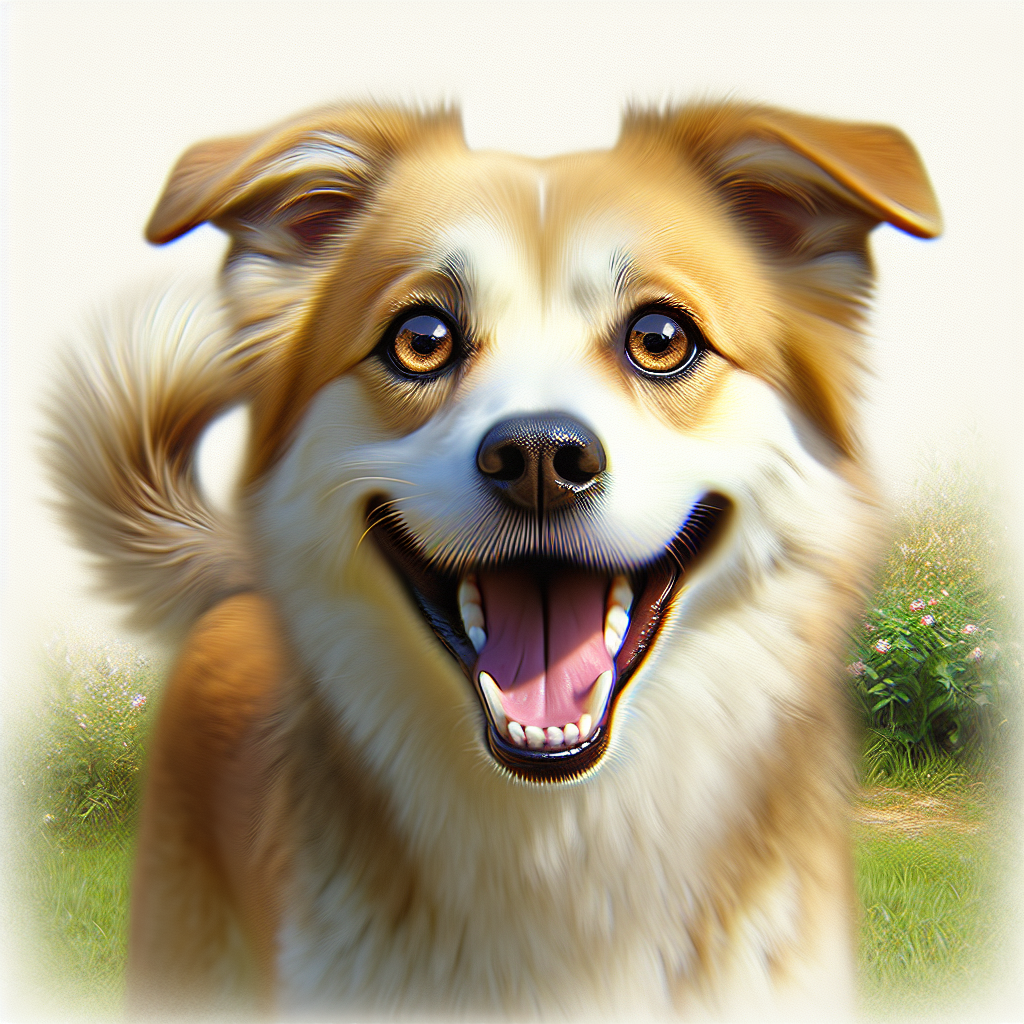Introduction

Hey there, fellow dog lovers! Picture this: it’s a warm Saturday afternoon—you’re lounging in the backyard, cold drink in hand, and your furry friend is rolling around in the grass. Suddenly, the peace is shattered by the sight of your dog scratching furiously at their ear. Yep, it’s that time again—flea and tick season. But before you reach for those chemical-laden sprays, let me take you on a little journey to find the best natural flea and tick repellent for dogs. Trust me, we’re not just talking about any old solutions here. We’re diving into the world of natural remedies where Mother Nature herself plays a starring role.
The Quest for Natural Solutions
Now, don’t get me wrong. We’ve all been there—standing in the pet store aisle, jaw dropping at the prices of those high-end flea treatments. But there’s something about going natural that just feels right, doesn’t it? It’s like choosing a homemade pie over a store-bought one. You know what’s in it, and it’s usually better for you. For our canine companions, the quest for natural flea and tick prevention is like a treasure hunt—only the treasure is a happier, itch-free pup.
When I first started looking into natural flea repellent for dogs, it was a bit like trying to find the best coffee in a city that never sleeps. Overwhelming, to say the least. But let’s cut through the noise and keep it simple. The goal is to find solutions that not only work but are also safe for our four-legged friends. And that’s exactly what we’re going to uncover today.
Common Natural Ingredients for Flea and Tick Repellents
Essential Oils
Ah, essential oils. They’re like the hipster of the natural remedy world—mysterious, sometimes misunderstood, but oh-so-effective when used right. Essential oils for flea prevention? You bet. You see, fleas and ticks have a strong dislike for certain scents. Think of it like that time your uncle wore too much cologne at Thanksgiving—unbearable.
Lavender, peppermint, and lemongrass are some of the big hitters in the essential oils game. A few drops mixed with water can turn into a plant-based flea spray that’ll have those pesky bugs running for the hills. But a word to the wise—essential oils are potent. Use them sparingly and always diluted. Your dog’s nose is a lot more sensitive than ours, which is like comparing a gentle breeze to a gale-force wind.
Herbal Supplements
Now, onto herbal flea and tick solutions. These are the unsung heroes of natural pet care. While essential oils work on the outside, herbal supplements get to work from the inside out. Herbs like neem and rosemary have been used for ages to keep bugs at bay. It’s like they have an invisible force field, repelling fleas and ticks with their natural goodness.
Adding a sprinkle of brewer’s yeast to your dog’s food might just become your new secret weapon. It’s not just folklore—brewer’s yeast creates an environment that fleas find less than appealing. And the best part? It’s safe and easy to use. Just a pinch here and there, and you’re good to go.
Exploring Home Remedies
Alright, let’s talk home remedies for dog fleas. This is where we get a little DIY, and honestly, it’s kind of fun. Remember that apple cider vinegar you bought ages ago? Time to dust it off. A simple solution of apple cider vinegar and water can work wonders as a natural tick prevention for dogs. Spritz it on your dog’s coat, and it’s like setting up a bug-free zone.
But it’s not just about vinegar. Ever heard of diatomaceous earth? It sounds fancy, but it’s really just a fine powder made from crushed fossils. Sprinkle it around your home and yard, and it’s like laying a minefield for fleas. Just make sure it’s food-grade—don’t want any mishaps with the wrong stuff.
The Role of Nematodes in Pest Control
Now, let’s get a bit technical—enter nematodes flea control. These tiny, microscopic worms are like nature’s exterminators. They live in the soil and hunt down flea larvae like it’s their job—because it kind of is. Release them into your garden, and they’ll do the dirty work for you. It’s like hiring a tiny army to fight the good fight.
Nematodes are safe, effective, and they don’t charge by the hour. Plus, they’re completely natural, so you’re not adding any harmful chemicals to your dog’s environment. It’s a win-win situation. Just think about it—your backyard could become a flea-free zone without lifting a finger.
So there you have it, folks. The world of natural flea and tick repellents for dogs is vast and varied, and honestly, a bit of a wild ride. But with a little bit of know-how and some trial and error, you can find the perfect solution for your furry friend. Thanks for sticking around, and here’s to a happy, healthy, and itch-free season for you and your pup. Cheers!
The Power of Essential Oils: Friend or Foe?
Alright, let’s kick this off with something as old as your granny’s remedies—essential oils. These little vials of nature’s juice, promising everything from zen vibes to flea-free dogs, are all the rage. But do they live up to the hype, or are we just turning our pooches into walking potpourri?
Natural essential oils for dog fleas—what a mouthful, right? Let’s break it down. Lavender, peppermint, eucalyptus—sounds like a spa day, but for your dog. They say these oils are flea kryptonite. A few drops on your dog’s collar or diluted in water as a spritz might just do the trick. But here’s the kicker—essential oils can be a double-edged sword. Some dogs react like they’ve sniffed a ghost, itching and scratching more.
So, here’s the deal: test it out. Try a drop, see if your dog’s cool with it. It’s not a one-size-fits-all, just like those ridiculous dog sweaters you see on Instagram. Some essential oils can be harmful to dogs, so always check with a vet. You don’t want to trade fleas for a vet bill.
Diet Matters: Why What They Eat Could Keep Fleas at Bay
Now, onto the chow. Ever thought about what goes into your dog’s bowl? It turns out, flea-repelling foods for dogs might just be the secret weapon you didn’t know you had.
First off, garlic—hold your horses, I know what you’re thinking. Isn’t garlic bad for dogs? Yes, in large quantities, it’s a no-go. But a tiny amount might help keep fleas away. It’s like that uncle who eats raw garlic to keep vampires at bay.
Then there’s apple cider vinegar. Mix a splash into their water, and it might just turn your dog into a less tasty treat for fleas. Omega-3 fatty acids, found in fish oil, can also make your dog’s skin less appealing to fleas.
It’s about time we give dog food the respect it deserves. Don’t just grab the cheapest bag of kibble. Dig into the ingredients—your dog’s health and your flea battle plan depend on it.
The Role of Regular Grooming: More Than Just a Pretty Coat
Grooming. It’s not just about making your dog look like they stepped out of a pet magazine. No sir, it’s your secret weapon against fleas.
The benefits of dog grooming for flea prevention are massive. Regular brushing removes dirt, dead hair, and those sneaky flea eggs. Plus, it’s a good bonding time with your pup.
Shampoo with a natural flea-repellent can add an extra layer of defense. And while you’re at it, check those ears, nails, and teeth. It’s like giving your dog a full-service spa day—minus the cucumber slices.
But wait, there’s more. Bathing your dog too often can strip their skin of natural oils, making them more prone to fleas. So, keep it balanced. Groom often, but don’t go overboard.
Backyard Battles: Keeping the Home Turf Flea-Free
Ah, the great outdoors. Your backyard—a flea’s paradise. Those little guys love nothing more than a grassy playground. But fear not, there are natural ways to treat your yard for fleas.
Start by keeping the grass short and the bushes trimmed. Fleas aren’t big fans of sunlight, so let it shine. Then, consider nematodes—tiny worms that feast on flea larvae. Sounds gross, but hey, whatever works, right?
Another tip is diatomaceous earth. Sprinkle it around your yard, and it acts like tiny shards of glass to fleas. Just make sure it’s food-grade, not the stuff you’d use in a pool filter.
And let’s not forget about those pesky standing water spots. They’re breeding grounds for mosquitoes, which means more itchy nights for your dog. Drain them and let your yard breathe.
Flea Collars and Natural Alternatives: What’s the Deal?
Finally, the flea collar. That old standby. But are they still the go-to, or are there natural flea collars vs commercial brands that are worth a look?
Traditional flea collars can be effective, but some contain chemicals that might not sit well with you or your dog. Enter natural flea collars—infused with essential oils and herbs. They claim to repel fleas without the harsh stuff.
But do they work? Well, it’s a mixed bag. Some dog owners swear by them, while others call it a bust. It might come down to trial and error.
If collars aren’t your thing, there are sprays and powders with natural ingredients. Just like the essential oils, it’s all about finding what your dog tolerates.
In this journey of flea warfare, remember—there’s no silver bullet. It’s a mix of diet, grooming, yard work, and maybe a little splash of nature’s oils.
Thanks for sticking with me through this flea-filled journey. May your days be flea-free and your pups be happy!
Common Mistakes When Using Natural Repellents
Alright, folks, let’s kick things off with a stroll down Mistake Lane. We’ve all been there—thinking we’re doing right by our furry pals, only to find out we’ve been barking up the wrong tree. Common mistakes with natural repellents for dogs? Oh, they’re aplenty. Imagine slathering your pup in essential oils like they’re the latest must-have elixir—only to realize you’ve just turned your dog into a walking air freshener, not a flea-repelling machine. Essential oils aren’t a one-size-fits-all solution, and some can even be harmful if not used right. It’s like trying to swat a fly with a sledgehammer—overkill and messy.
I once had a neighbor, bless her heart, who swore by her homemade brew. She’d mix all sorts of things—garlic, vinegar, you name it. Her house smelled like a salad factory. Yet, her dog still scratched like there was no tomorrow. It’s easy to get caught up in the DIY hype, but without knowing what you’re doing, you’re just setting yourself up for a flea-infested fiasco.
And then there’s the dosage dilemma. Folks think more is better—like pouring half a bottle of repellent on their dog will do the trick. Spoiler: It won’t. It’s all about balance, my friends. Too little, and you’re hosting a flea convention. Too much, and you might be doing more harm than good. So, take a step back, take a deep breath, and read the labels. Trust me, future you will thank you.
DIY Natural Flea and Tick Repellent Recipes
Now, for those of you who love to roll up your sleeves and get a little crafty—welcome to the DIY flea and tick repellent recipes for dogs club. You don’t need to be a wizard in the kitchen to whip up something effective. Just a few pantry basics and a little elbow grease.
Let me take you back to a summer afternoon in my tiny kitchen. I was on a mission to create the ultimate homemade dog flea repellent. Armed with apple cider vinegar, lemon juice, and some herbs, I concocted what I affectionately called “Flea-B-Gone.” It smelled like salad dressing, but it worked like a charm. My dog, Max, strutted around the dog park like he owned the place—flea-free and full of swagger.
You see, it doesn’t have to be complicated. A little vinegar here, a dash of lemon there, and you’ve got yourself a natural flea and tick repellent that won’t break the bank. Plus, the satisfaction of knowing you made it yourself? Priceless. Maybe you’ll even save enough to finally get that fancy coffee maker you’ve been eyeing. Just remember to keep it simple and stick to the recipe. No need to turn your kitchen into a flea-repellent chemistry lab.
Success Stories: Tales from the Dog Park
Let’s move on to the best part—success stories. I’ve spent countless afternoons at the dog park, chatting with fellow dog lovers about their natural flea and tick repellent triumphs and, of course, their hilarious mishaps. These are folks just like you and me, armed with nothing but determination and a couple of DIY recipes.
Take Lucy, for instance. She was the proud owner of a scrappy little terrier named Bingo. Lucy tried a concoction of coconut oil and lavender, and lo and behold, Bingo was flea-free within weeks. She’d share her story with anyone who’d listen—natural flea and tick repellent success stories were her jam. Then there was Tom, who tried to make his own concoction but ended up with a dog that smelled like an Italian bistro for a week. We laughed about it—because if we can’t laugh at ourselves, what’s the point, right?
And let’s not forget the dog park flea prevention stories. I’ve heard tales of triumph where a simple homemade spray saved the day. It’s stories like these that keep us going, knowing that with a little effort and the right mix, we can keep our pups happy and healthy.
When to Consult Your Vet
Now, I get it. You’re a DIY hero, but sometimes, you gotta know when to call in the cavalry. Consulting your vet for flea and tick prevention isn’t admitting defeat—it’s smart. There are times when Mother Nature needs a little backup, and that’s where the pros come in.
Picture this: you’ve tried everything under the sun, and your dog’s still scratching like there’s no tomorrow. It’s time to hightail it to the vet. They’ve got the know-how and the tools to get your pup back on track. Don’t be a hero—sometimes we all need a little help from the experts. Whether it’s a stubborn flea problem or a tick that just won’t quit, your vet can guide you through the maze of flea and tick prevention with a steady hand.
I’ve had my fair share of vet visits over the years. Each time, I walked away with a little more knowledge and a lot more peace of mind. Because at the end of the day, our dogs rely on us to make the best choices for them. So, when in doubt, consult your vet.
The Future of Flea and Tick Prevention
Finally, let’s gaze into the crystal ball and talk about the future of natural flea and tick control for dogs. What might be just around the corner? Will your dog be wearing a techy tick-deterring collar? Or maybe we’ll see the rise of all-natural flea-repelling treats? Who knows?
The pet industry is always evolving, and with it, new and exciting solutions for keeping our furry friends safe. But one thing’s for sure—the demand for natural, effective solutions is here to stay. As pet parents, we’re always looking for the best ways to keep our pups happy and healthy without resorting to harsh chemicals. And the future looks bright.
So, here we are, at the end of this flea-bitten journey. Thanks for sticking with me. Keep those tails wagging and remember—you’re doing great.
Quick Takeaways:
Alright, let’s cut to the chase. When it comes to finding the best natural flea and tick repellent for dogs, you’ve got options. Essential oils are a big hit—things like lavender and cedarwood can do wonders. But hold your horses, don’t go dousing your pup just yet. Dilution is key, or you might end up with a very annoyed pooch. Then there’s the herbal flea and tick solutions—these are usually plant-based, so you’re not blasting chemicals around. But they need a little consistency. You can’t just spray once and call it a day.
Food can be a flea fighter too. Yep, sounds odd, but flea-repelling foods like garlic (in moderation) can help. Just a sprinkle can make a world of difference.
Now let’s talk grooming. It’s more than just making your dog look dapper. Regular grooming keeps those pesky fleas in check. And your yard, oh boy, that’s a whole other battlefield. Think nematodes for flea control—tiny, mighty, and they love munching on flea larvae.
Finally, the age-old debate: natural flea collars vs commercial brands. The natural ones might not pack the same punch, but they’re a gentler option for your furry friend.
So, if you’re on the hunt for the best natural flea and tick repellent for dogs, remember this: a little trial and error goes a long way. Keep at it, and you’ll find what works for you and your furball.
FAQs:
1.
Do essential oils really work as the best natural flea and tick repellent for dogs?
Well, they can, but it’s not a magic bullet. Essential oils like lavender and eucalyptus have properties that fleas and ticks detest. But here’s the kicker—use them right. You’ve got to dilute them in a carrier oil. Applying them directly can irritate your dog’s skin, and that’s a whole other can of worms. So, yes, they work, but they need a bit of know-how.
2.
What are some common mistakes people make with natural flea repellents for dogs?
Oh, where to start? The most common blunder is going in guns blazing with essential oils. Dilution, folks, dilution. Some pet parents also forget that consistency is key. You can’t skip a week and expect the fleas to stay away. Also, not considering your dog’s allergies—some natural ingredients can still cause reactions. So, do a patch test first.
3.
Are there any flea-repelling foods for dogs that are effective?
You bet! Garlic is a well-known one, but remember, moderation is crucial. Too much can be harmful. Brewers yeast is another option. It’s said to make your dog’s blood less appealing to fleas. But always check with your vet before adding anything new to your pet’s diet.
4.
How do natural flea collars stack up against commercial brands?
Natural flea collars are like the gentle giants of the repellent world. They use essential oils and don’t expose your dog to harsh chemicals. They might not be as long-lasting as commercial options, but they’re kinder on your pup’s skin. If your dog has sensitive skin or reacts to commercial collars, the natural route might be your best bet.
5.
Can I use home remedies for dog fleas to treat my yard too?
Absolutely. Your yard is a flea’s playground, but not if you have anything to say about it. Nematodes are your friends here. They’re microscopic and love to snack on flea larvae. You can also try diatomaceous earth—it’s a bit of a mouthful, but it’s natural and effective. Sprinkle it around and let it do its thing.
Conclusion:
So, there you have it. The world of flea and tick prevention is a bit of a jungle, but with the right tools, you can navigate it like a pro. Remember, the best natural flea and tick repellent for dogs isn’t a one-size-fits-all. It’s about finding what aligns with your lifestyle and your dog’s needs. Sure, it might take some trial and error, but don’t sweat it.
Keep experimenting with essential oils, herbal solutions, and maybe even those flea-repelling foods. Stay vigilant with grooming, and don’t forget your yard. It’s all about the big picture.
Thanks for sticking with me on this flea-busting journey. Your commitment to keeping your furry friend safe and comfy is what matters most. Here’s to happy, healthy, flea-free days. Keep those tails wagging, and remember—you’ve got this!
References:
1. [AKC Pet Insurance Blog – Natural Flea and Tick Prevention](https://www.akcpetinsurance.com/blog/natural-flea-and-tick-prevention)
2. [PetMD – Natural Flea Repellent for Your Pets and Home](https://www.petmd.com/general-health/natural-flea-repellent-your-pets-and-home)
3. [NRDC – Nontoxic Ways to Protect Your Pet](https://www.nrdc.org/stories/nontoxic-ways-protect-your-pet)
4. [Four Leaf Rover Blog – Natural Health Recipes for Flea and Tick Prevention](https://fourleafrover.com/blogs/natural-health/5-recipes-for-natural-flea-and-tick-prevention-for-dogs)
Our solution eradicates fleas on contact without harmful chemicals, ensuring a safe environment for your pets and family. Easy to use and highly effective, SayByeBugs helps you maintain a flea-free home. Learn more and order today at SayByeBugs.com
Our solution eradicates fleas on contact without harmful chemicals, ensuring a safe environment for your pets and family. Easy to use and highly effective, SayByeBugs helps you maintain a flea-free home. Learn more and order today at SayByeBugs.com








